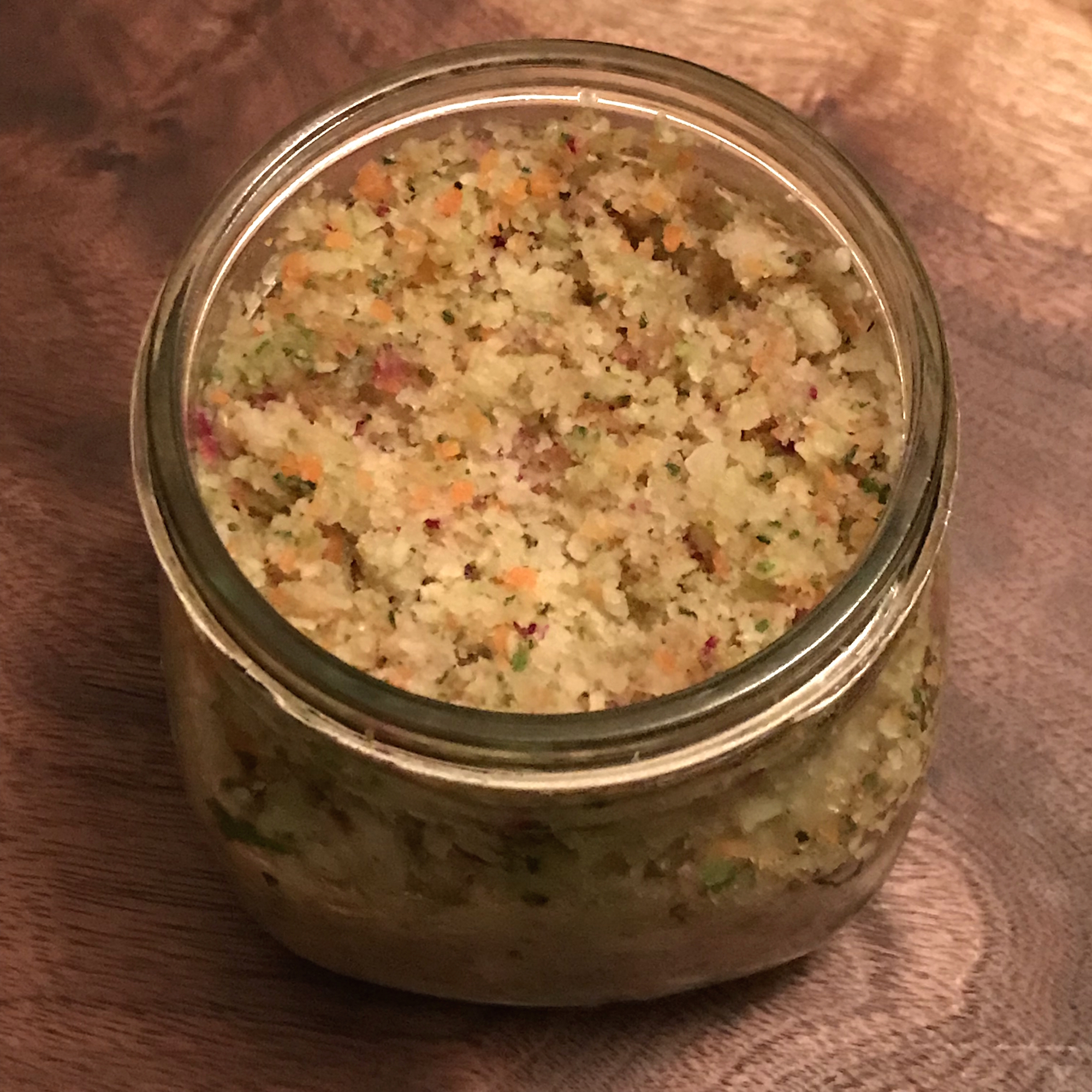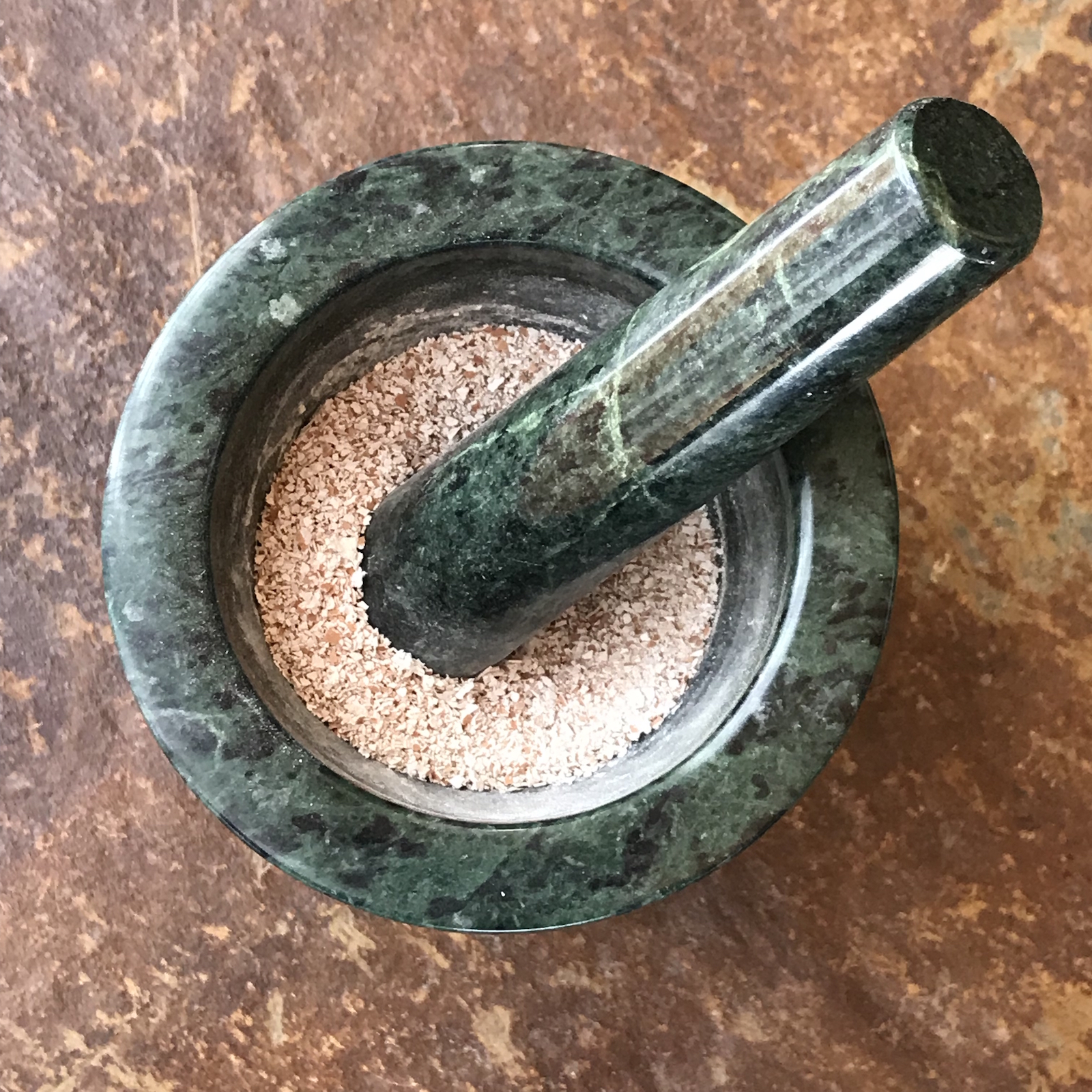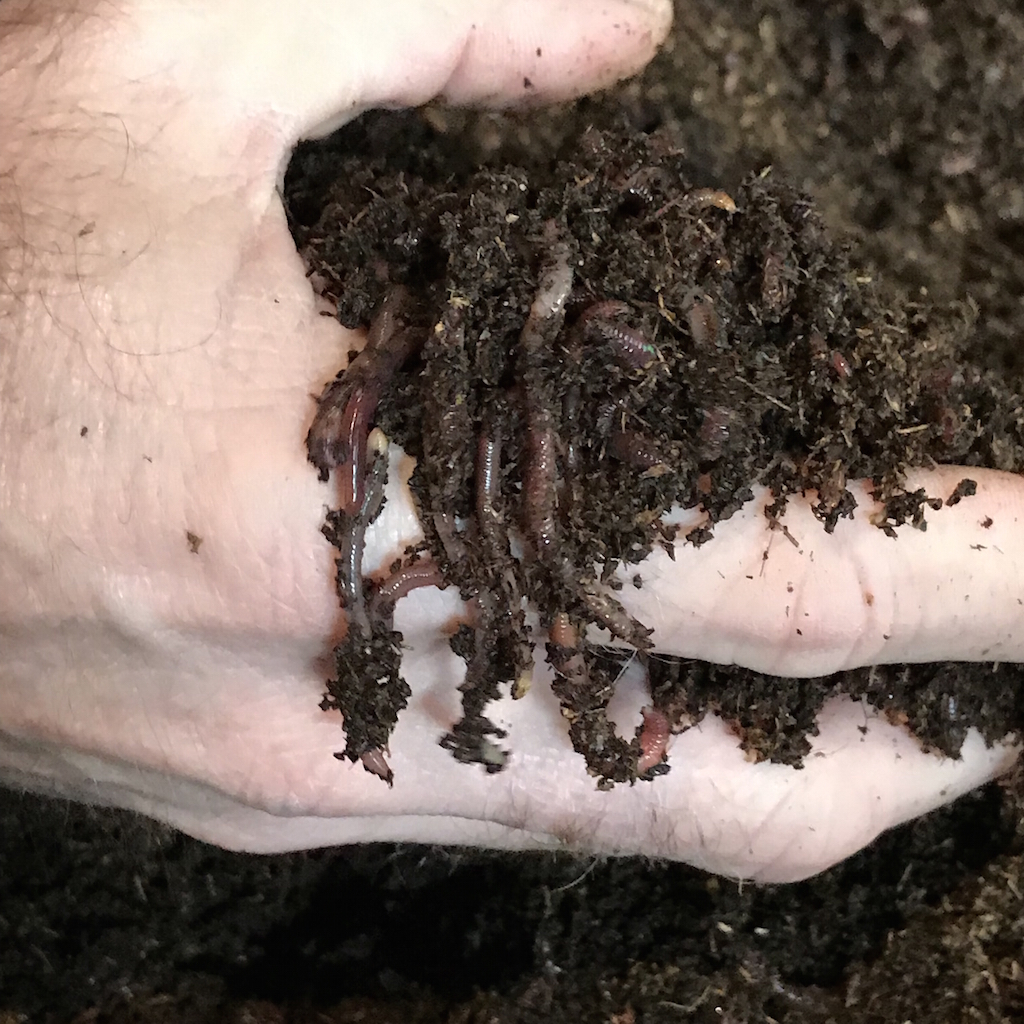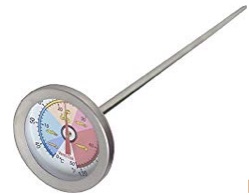FEEDING RED WIGGLERS
Remember worms have no teeth! If you have a food processor or a rubber mallet, you can process food scraps and store in the refrigerator or freezer. Red Wigglers when happy and healthy can eat about half of their weight in food each day.
- Vegetable scraps, apple cores, peels, and wilted lettuce or trimmings. Any vegetable that’s not spicy or really gaseous will make them happy.
- Freeze lettuce and use food processor or rubber mallet to break down into tiny pieces, this will make it easier for the red wigglers to eat.
- Non-citrus fruit work best, such as watermelon and rind, strawberry tops, old blueberries, banana peels (use food processor for peels). If you use a juicer, the pulp is a great food source too. Omit citrus all together to avoid fruit flies and to keep the bin clean smelling and easy to work with.
- Used tea and/or tea bags. We like to rip up the bags before dropping in but it’s not necessary to break them up.
- Coffee grounds and filters. Don’t add too much coffee all at once. Mix with other foods. Test your worms’ preferences.
- Dried leaves. If you want to add more bedding, leaves are awesome!
- Used napkins and paper towels are ok as long as they are not greasy.
- Shredded cardboard (paper towel and toilet tissue rolls), ripped egg crates, and paper bags are easy to find and recycle. Shred up the paper bags to make the bedding fluffy. I like to moisten the paper materials before adding to the bin. I dip in a big bowl of water or spray (you can use a spray bottle or foliar sprayer).
- Crushed Egg Shells and egg shell powder (use a mortar & pestle). Reproduction increases when worms live among egg shells! It helps add a little grit to the bin.
LIMIT:
- Citrus peels and fruit – to avoid fruit flies.
- Starchy foods like pasta, bread and rice – too much for worms to handle with all that bedding already in there. It will take longer for the bin to compost.
AVOID:
- Onions
- Garlic
- Spicy Ingredients
- Spicy peppers
- Twigs
- Meat
- Daily
- Oily foods
- Plastic
- Metal
- Glass
- Animal feces
TIP:
Always cover the food with bedding or a moist newspaper worm blanket. Folks that dump food on top increase the chance of fruit flies or smells. The best method is to make layers of food and bedding with a big layer of bedding on top.


Why You Need to Regulate Worm Bin Temperature
It’s important to regulate the temperature in your worm bin. When the worm bin temperature is not ideal, worms will become less productive. And in extreme temperatures, your worms will likely suffer and perish if no action is taken.
Worm Bin Temperature Ranges:
Worms like the same temperatures as humans. So if you are cold, so are they. Although one thing to keep in mind is the temperature in the worm bin is usually lower than the outside air temperature. The bin temperature is usually 10° Fahrenheit or 6° Celsius cooler than air temperature in summer, and 10° Fahrenheit or 6° Celsius warmer than air temperature in winter. Worms can tolerate a wide temperature range. In general worms are most productive between 59° – 86° Fahrenheit or 15° – 30° Celsius.
When temperatures are not ideal, your worms will slow down their reproduction rates and eat less food. If your worms are too cold, they will crawl a lot and eventually mass together in a ball, resembling a hamburger, to keep warm.
Worms will try to migrate to cooler spots in the worm farm such as the base when it starts to get too hot. Under extreme temperatures, your worms may go into a bit of a survival mode, causing them to reproduce in a hurry. They will also migrate to cooler areas or attempt a mass exit escape. Generally, once temperatures start to creep above 95 ° Fahrenheit or 35° Celsius, your worms will likely suffer and perish if additional measures are not taken.
Different species of worms are better suited to cooler or warmer temperatures. For example, Blue Worms or African Nightcrawlers are better suited to tropical climates. They will survive a heat wave much easier than Red Wigglers without becoming sick or dying off.
How to Quickly Increase Worm Bin Temperature
The easiest way to increase worm bin temperature is to move it to a warmer place. This could be inside your home, or near an external exhaust vent of heating system. Or you can add a heat source such as a heat lamp or a spotlight onto your worm bin.
Alternatively, you can try and insulate your worm bin to trap the heat in. This includes wrap it in wool, cardboard, fabric etc… And adding dry leaves, straw or newspaper on top of the worm bedding. You could also partially bury your worm bin in the ground as well. Although you need to be careful not to restrict airflow.
How to Quickly Decrease Worm Bin Temperature
On really hot days, one of the worst things you can do is add water into your worm bin. Whilst it may seem a nice thing to do to help your worms stay cool, it can actually boil them.
If your worm bin is in direct sunlight, then the first thing you should do is move it into a shady spot (e.g. under a tree).
During heat waves, I move my worm farm inside so that it stays cool. You can also create a cool zone for your worms on really hot days, by adding a frozen bottle of water, wrapped in newspaper, in the bedding. Adding a large ice block on top also works well. Draping a damp cloth or hessian over the worm farm can also act as evaporate cooling.
A lot of worm bins are black in color, which naturally absorbs more heat. To alleviate this problem you could cover your worm bin with light-colored materials such as second-hand carpet. I usually just throw some cardboard insulation on top for hot days.
Regulate Worm Bin Temperature
Use a soil thermometer to measure the temperature of your worm bin bedding. If you know in advance of really hot or cold days, you can take some precautionary measures to ensure the well-being of your worms. For example, you may decide to move your worm farm temporarily inside.
A well maintained worm farm will help to avoid extreme temperatures in the worm bin. Bedding acts as an insulator against extreme temperatures and offers respite for worms. In addition, if you add too much food scraps, the excess food will create a hot compost pile as it breaks down. You can try feeding your worms in pockets (pocket feeding). This allows worms to move away from hot food areas and go to a cooler pocket. In colder months, it’s a good idea to add foods high in nitrogen, as these foods generate more heat as they break down.
Another aspect of regulating worm bin temperature is airflow. A common problem with plastic worm farms is they don’t allow for much air and moisture release. Heat is slow to dissipate once it is generated. To mitigate, once a week you should lightly lift and fluff the bedding material to create air space and to prevent it from compacting. Opening the spigot and cleaning the ventilation holes will also help to improve airflow.
Handling Red Wigglers

Red Wigglers will excrete a foul smelling liquid when handled roughly. Worms release coelomic fluid for a number of reasons, one of those being stress. As such, Red Worms will sometimes release this liquid as a defense mechanism when they are feeling threatened. Exposure to light also triggers the release of the coelomic fluid. This yellow liquid may smell like garlic, hence the scientific name Eisenia foetida. Foetida means smelly. When conducting experiments with worms, you may want to gently spray the worms with water every few minutes and limit exposure.

